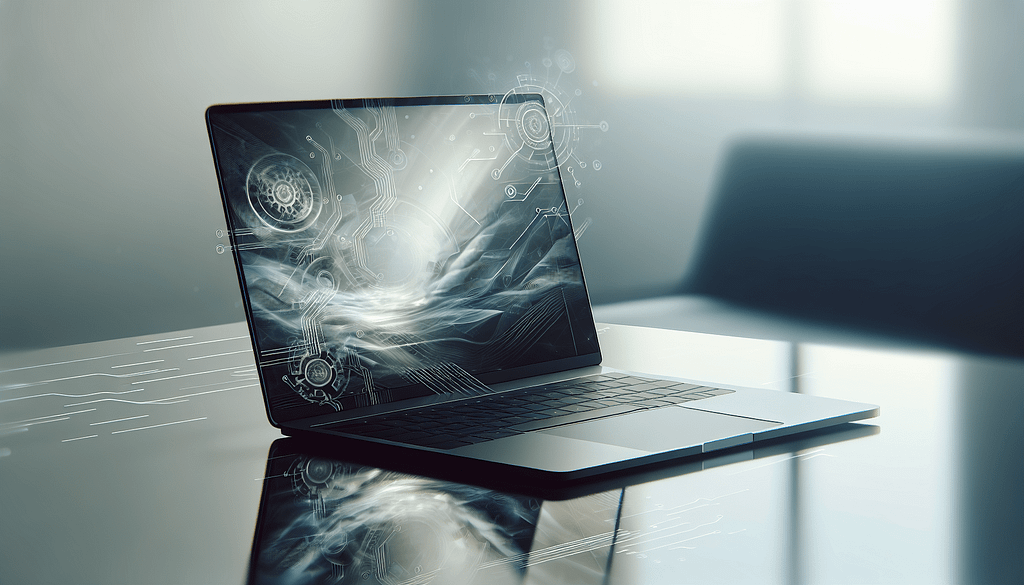Why Do MacBooks Get Slower Over Time?
Why do MacBooks slow down over time? Discover the secrets behind your sluggish machine and learn how to keep it lively and in tip-top shape with expert tips!
Why Do MacBooks Get Slower Over Time?
If you’ve found yourself staring at the spinning beach ball on your MacBook, you’re not alone. Over time, many users experience a gradual slowdown in their beloved machines. But what actually causes this slowdown? In this article, we’ll explore the various reasons why your MacBook might be feeling a little sluggish. So grab your favorite snack, make yourself comfortable, and let’s dive into the fascinating world of Mac performance!
Age Isn’t Just a Number
Just like how we feel a bit creaky after years, your MacBook ages too. The hardware, though initially robust, experiences wear and tear over time. Components like the hard drive, CPU, and RAM can degrade, leading to slower performance. Imagine your MacBook as a finely aged cheese — it might be delicious, but it might not perform the same way it did when it was fresh out of the box.
As your machine ages, it may not be able to keep up with the demands of the latest software, which can require more processing power and speed than your older model can provide. The updates are designed for more powerful hardware, and your trusty Mac may be left in the dust.
Software Updates: A Double-Edged Sword
Introducing the hero and the foe — software updates! Apple frequently releases updates to improve the functionality of macOS and apps, and while these updates often enhance security and introduce new features, they can also bring a hefty toll on your machine’s resources. Each update may require more system resources than before, meaning your MacBook might struggle to keep up.
It’s a bit like getting a new pair of shoes — they may improve your performance on the dance floor, but they also might pinch your toes if they aren’t a perfect fit. You may want to consider whether you really need the latest operating system update or if your current macOS version meets your needs. Sometimes, sticking with an older version allows you to maintain optimal performance.
Storage Full to the Brim
Picture this: your MacBook is an apartment, and the storage is the space available to store your life’s belongings. Over time, as you download files, install applications, and save every adorable cat video, your storage fills up. When there’s little room left on your hard drive, your MacBook can struggle to operate efficiently.
macOS needs free storage space for virtual memory, which it uses to swap data in and out. If your hard drive is full, your Mac might feel like a packed suitcase that won’t zip shut. Cleaning up your storage by uninstalling unused applications, clearing out downloads, and transferring files to external drives or cloud storage can help your MacBook breathe a little easier.

Background Processes: The Sneaky Culprits
While you’re happily checking your emails and maybe enjoying a light-hearted video on YouTube, your MacBook is hard at work in the background. Background processes are essential for keeping applications running smoothly, but they can also be the sneaky culprits behind your MacBook’s sluggishness.
Every time you turn on your Mac, various applications and services start automatically. Most of the time, you don’t even notice they’re there — like those well-meaning, but overbearing relatives who insist on helping you with everything. To keep your system running smoothly, take a moment to review which applications you really need launching at startup and streamline the process.
Memory (RAM) Conundrum
Just as our brains can get bogged down with too much information, your MacBook’s RAM can be a bottleneck if it’s insufficient for the tasks at hand. When you run several applications simultaneously or use memory-intensive software, your MacBook may need to swap data into and out of storage, which slows everything down. It’s like trying to juggle too many plates at once; eventually, something is bound to come crashing down.
If you often find yourself with several tabs open in Safari or multiple applications running, consider upgrading your RAM if your MacBook model allows it. More RAM means your computer can handle more tasks at once, giving your MacBook the pep it needs to keep up with your busy lifestyle.
A Cluttered Desktop
You know that friend who can’t seem to get their life together — papers everywhere, clothes strewn about, and who even knows what’s hiding in the back of the closet? Your desktop can become a similar mess if you’re not careful. A cluttered desktop can lead to a slowdown because every icon and file is taking up resources.
Neatly organizing your files using folders and keeping your desktop as clean as possible can help your MacBook perform better. Plus, a tidy desktop can contribute to a clearer mind; it’s easier to find that important document when you’re not sifting through a sea of digital clutter.

Aging Hardware Components
As with the aging process, hardware components can become less effective over time. If you’ve owned your MacBook for several years, the components inside — like the hard drive or battery — may be aging. Traditional hard drives (HDD) are particularly susceptible to slowdowns, especially as they fill up and accumulate fragmented data.
Consider upgrading to a Solid State Drive (SSD) if you haven’t already. SSDs are faster, more reliable, and can breathe new life into an older machine. They’re like the fountain of youth for your MacBook; a little upgrade can make a world of difference!
Overheating: The Silent Killer
If there’s one thing you don’t want lurking around your tech, it’s the threat of overheating. MacBooks have built-in cooling systems, but these can become less effective if dust and debris accumulate in the vents and internal components. When your laptop gets too hot, it may throttle performance to protect itself from damage.
To prevent overheating, make it a habit to keep your MacBook clean. Use compressed air to blow out dust from the vents and internal components. Additionally, be mindful of where you use your MacBook; soft surfaces like beds and couches can block airflow, leading to overheating.
Malware and Rogue Applications
Though macOS is known for its robust security features, it’s not immune to malware and rogue applications. These unwelcome invaders can eat away at your system resources, leading to a sluggish machine. While you may think that malware is something only Windows machines suffer from, you should still take precautions to keep your MacBook safe.
Using reliable antivirus software, regularly updating your system, and being cautious about downloading software from unknown sources can help keep your MacBook free of malware. Think of it as personal hygiene for your computer; regular “check-ups” go a long way in ensuring optimal performance.
Resource-Heavy Applications
In the digital age, we’ve become all too familiar with resource-heavy applications that make our lives easier but can weigh down our MacBooks. Graphic design software, video editing tools, and large datasets can demand significant processing power. While these applications are essential for certain tasks, they can turn your MacBook into a sluggish tortoise if not managed properly.
When using heavy applications, ensure that you close any unnecessary programs running in the background. It’s like emptying your bag before you head out for a day of exploration; you’ll travel lighter and faster without the excess weight.
The Role of System Preferences
Did you know that your system preferences can play a role in how fast your MacBook runs? Certain settings can impact performance, and it’s worth taking the time to optimize them. For instance, visual effects and animations that add flair can actually slow things down on older machines.
Head over to the System Preferences panel and disable any features you don’t need. You might be surprised at how much faster your machine becomes with a few simple tweaks. Think of it as decluttering your home; sometimes less is truly more.
Resetting NVRAM and SMC: A Fresh Start
Sometimes, it’s not about adding things to improve performance but resetting certain components instead. The NVRAM (non-volatile random access memory) and SMC (System Management Controller) are essential parts of your MacBook that store important settings. Over time, they can become corrupted or out-of-sync.
Resetting these components can provide a fresh start for your MacBook, potentially resolving performance issues. It’s a bit like hitting the reset button on your day when things aren’t going quite right — you may come back feeling refreshed and ready to tackle new challenges.
Regular Maintenance: A Preventive Approach
Just as you visit the dentist for regular check-ups or change your car’s oil, your MacBook requires regular maintenance to ensure it runs smoothly over time. Creating a routine that involves clearing cache files, uninstalling unused applications, and updating software can make a world of difference.
Think of it as a little spa day for your computer! Scheduled maintenance helps keep your MacBook healthy, prolonging its useful life and allowing it to operate at peak performance.
Embracing the Upgrade Path
If you’ve tried everything and your MacBook still feels sluggish despite your best efforts, it may be time to embrace the upgrade path. Technology evolves quickly, and as much as we might love our older MacBooks, there comes a time when a hardware upgrade is simply necessary.
When considering an upgrade, think about your specific needs. Are you using your MacBook for intensive tasks like gaming or professional video editing? If so, investing in a more powerful model could be a wise decision. Embrace innovation — there are always exciting advancements on the horizon to explore!
Conclusion: A Journey of Care and Love
Understanding why your MacBook slows down over time can help you manage and maintain its performance more effectively. It’s a journey that centers on care and love for your machine. By staying proactive and making a few adjustments along the way, you can keep your MacBook not only functional but also enjoyable to use.
If you found this article helpful, why not give it a clap? Feel free to leave a comment with your thoughts or any tips you might have for keeping MacBooks running smoothly. And don’t forget to subscribe to my Medium newsletter for more updates and insights. Here’s to many more years of enjoying your MacBook at peak performance!
from Stories by Casenixx Phone Cases on Medium https://ift.tt/OGP3tb9
via IFTTT
Comments
Post a Comment